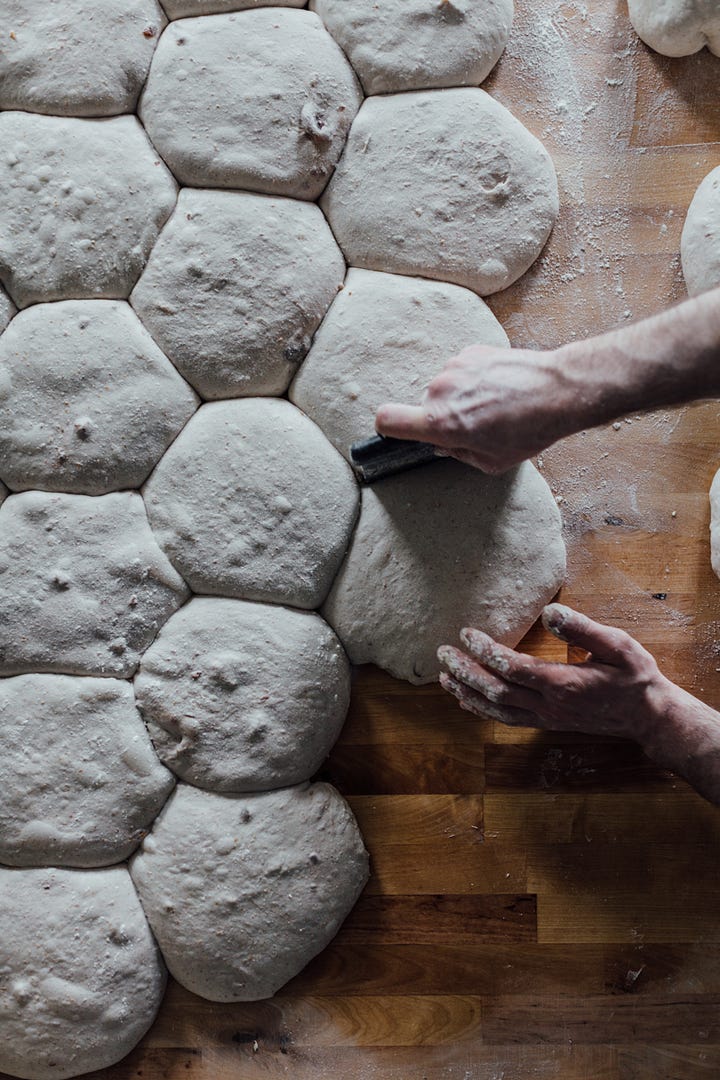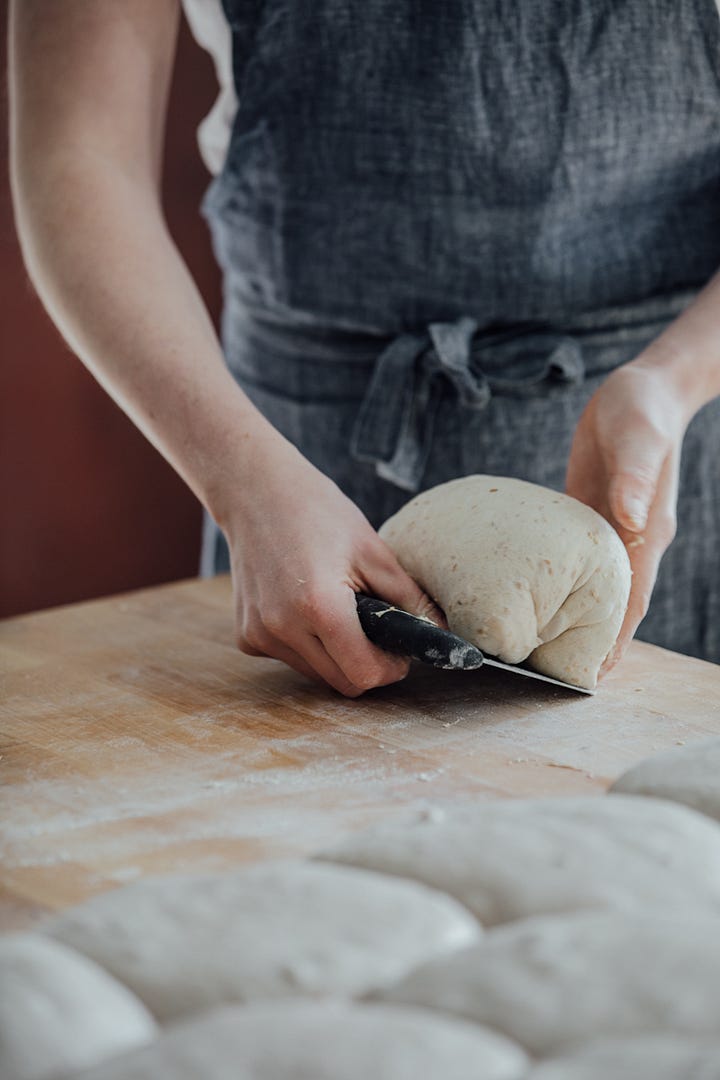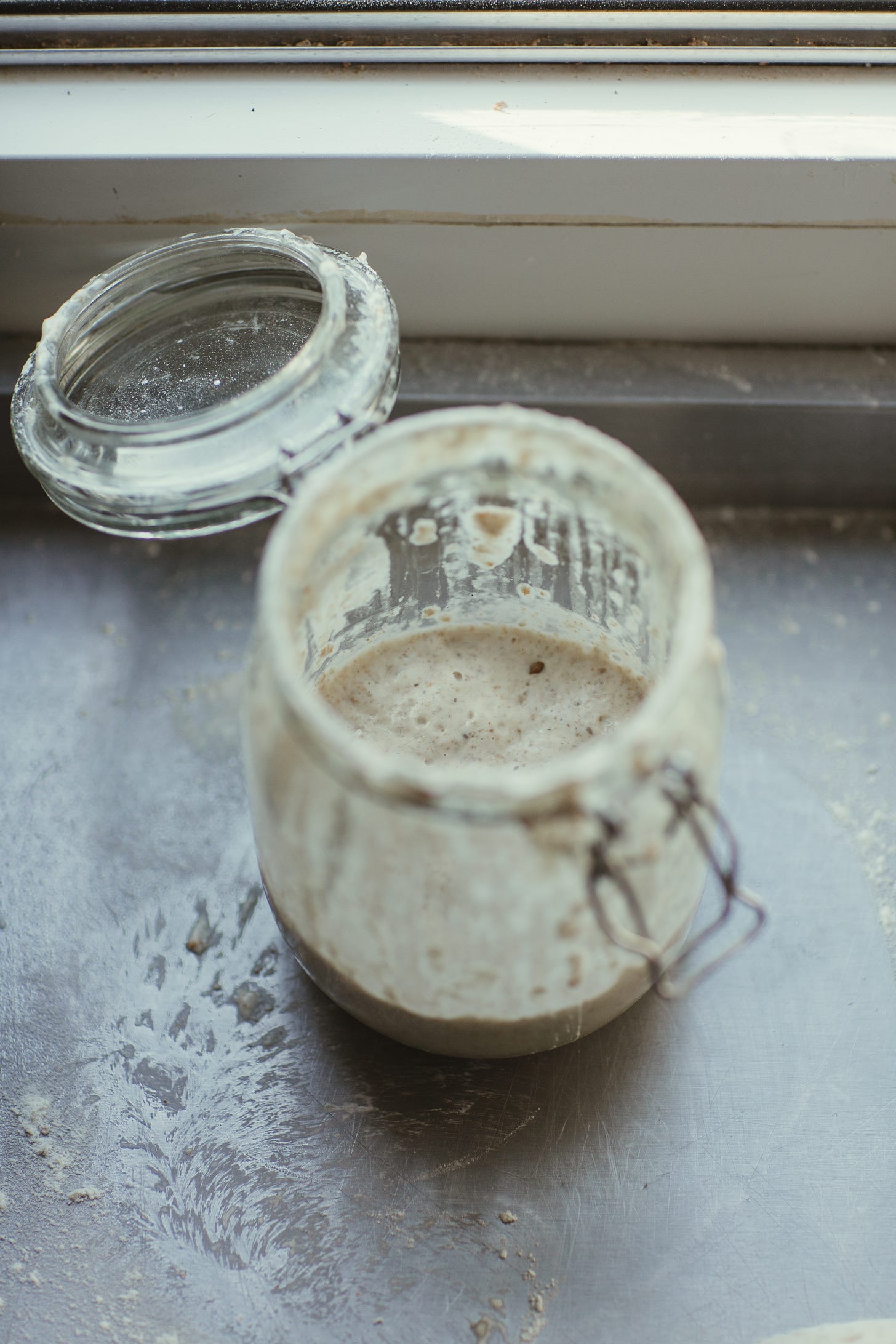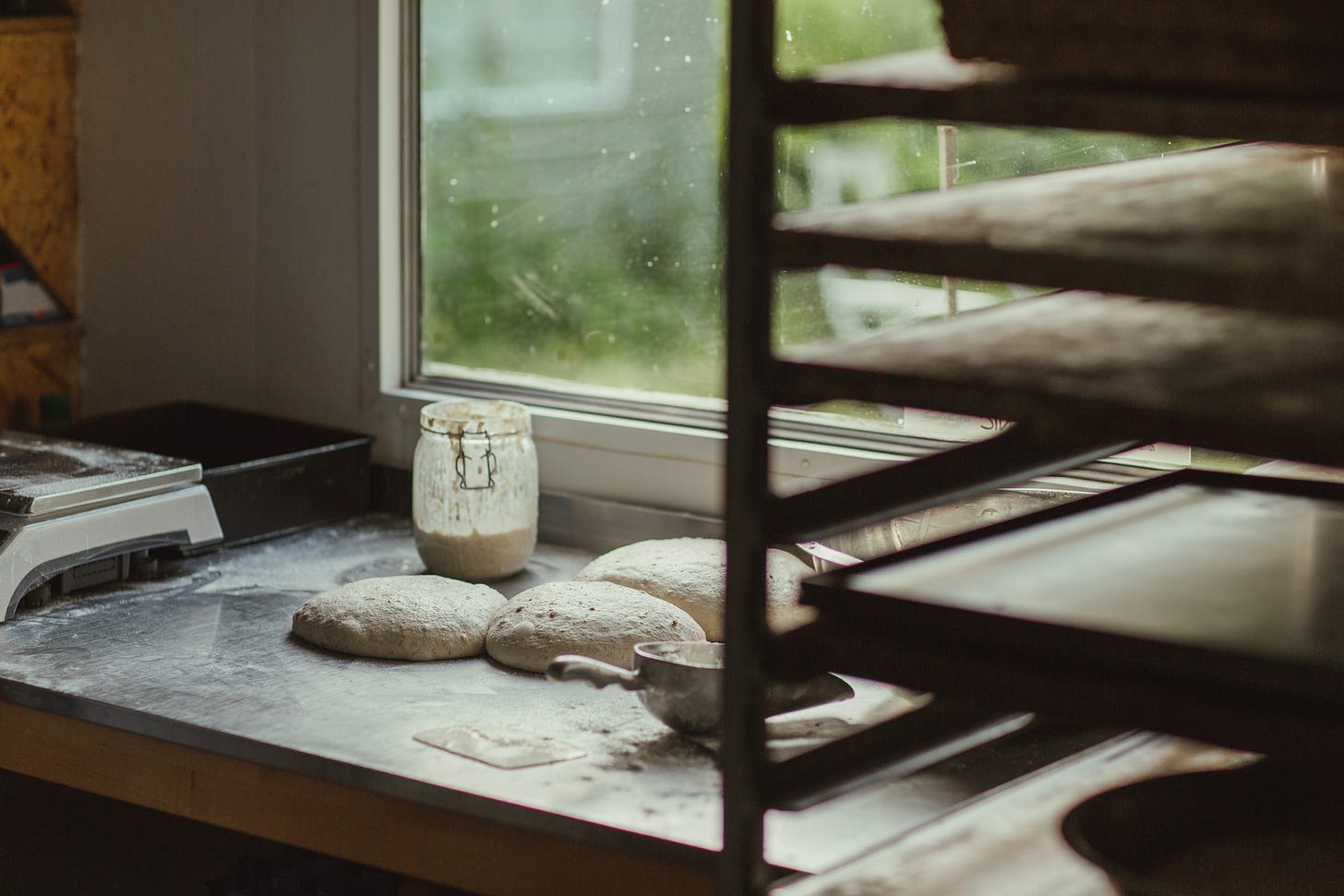Sourdough Discord
SCÉAL #06 - A Short Introduction To My Mother and A Recipe for Your Leftover Sourdough Discard
This is my mother, Geraldine, my sourdough mother, named after my own mammy. She’s been with me since September 2014 when I started teaching myself how to make sourdough bread. I now teach others at the bakery. We host interactive, hands on workshops where participants get to take on the task of making their own mother, mix, proof and bake a sourdough bread. We snack on some fresh bakes and enjoy a family-style a (not so) light lunch centered around bread.


When it comes time to describe the feeding schedule of everyone’s newly adopted sourdough pet, one of the most frequently asked questions at the workshops is “What can I bake with the sourdough discard?” The answer is lots, and generally, I point them in the direction of the endless recipe reels internet. A seed of a quick loaf was sown a while ago after a little lock down laziness got me thinking of developing my own sourdough discard bread. One that is healthy hearty and quick, without lacking flavour or texture. With this recipe, if you have some sourdough in the fridge, you can go from batter to bread in a few hours.
Baking Spore-adically
We have been baking sporadically lately. That’s not a sourdough pun about wild yeast spores and hibernating lactic bacteria. It is rather a reflection of how badly I’ve been treating my mother and how lazy I get about baking bread at home.
Sourdough Discard Loaf
Since getting into baking, it has become more and more apparent that there is a relationship between the health of my mother and the quality of my baked goods. In an ideal world, my sourdough mother would normally be frequently fed and kept at a steady room temperature, rising and falling and feeding every 8 hours. However, it’s not practical and would be wasteful if not baked with regularly. As soon as you think about putting it in the fridge, it messes with Ma’s mojo. Quite literally!
Slowing down a sourdough starter by firing it in the fridge buys you some time and saves flour between feeds. The colder temperatures wreak havoc on the reproduction rate and cause the bacteria and yeast to become dormant. Refrigeration is a common method for storing sourdough starters over extended periods. It allows the starter to remain somewhat viable while also slowing down the fermentation so that you don't need to feed as frequently. This is important because with every feed comes a discard if you're not baking with it. Without discarding, your sourdough becomes too acidic and will grow exponentially.
Sticking your mother in the fridge will have some ill effects, as you would imagine. Over time, the acidity of the starter can increase as the lactobacillus bacteria that give the bread its signature tang continue to produce lactic acid. Acetic acids also build up even at these lower temperatures. This can cause the sourdough starter to become more and more acidic over time, which affects the yeast cells and the overall balance of your bubbly bread batter.
This happens if a sourdough starter is not refreshed or fed regularly while in the fridge. The yeast and bacteria enter a hibernative, spore-like state. This can lead to longer fermentation times and weaker rises when you get back to using the starter to make bread.
To avoid this, it's recommended to refresh or feed the sourdough starter regularly, even while it's in the fridge. Some bakers actually keep and bake their bread using the fridge method and by following a 1:2:2 ratio to feed their starter prior to going into the fridge. This means that you feed one part sourdough starter to two parts flour and two parts water. I’ve never had good results going straight into baking after cold-storing my mother.
However, the exact feeding ratio that works best for your particular sourdough starter may depend on a variety of factors, including the hydration level of your starter, the type of flour you're using, and the specific strains of wild yeast and bacteria in your starter culture. It's important to observe your starter and adjust your feeding ratio as needed based on its behavior and how it emerges from hibernation. For example, if your starter is still sluggish or not rising well after feeding, you may need to increase the feeding ratio or adjust the temperature of your environment to help it wake up and become more active.
That usually means one, two, or three consecutive feeds when you want to get back to baking. If it's been in the fridge for just a few days, I generally do one feed. Longer than a week, and I discard and feed twice before baking with a 12-hour gap between feeds. Any longer in the fridge, and I like to fully wake up the microbes with a third feed before using it in a mix. Usually it is full of life and doubles in size after 8 hours at room temperature, and that’s when I know it’ll make some beautifully bubbly bread.
But what about that discard? Is it useless? Is it purely sacrificial sourdough? What can I make with it? As it turns out, heaps. The internet is inundated with sourdough discard recipes, all of which are helpful, creative, and sometimes, scientifically speaking, an ingenious inclusion. There are many ways to use up this discard. Make sourdough pancakes or waffles. Bake sourdough crackers. Create a sourdough starter pack for a friend. Use it to thicken soups, sauces, and stews - similar to how you might use a roux. Try saving some to batter a beautiful fillet of fish. I’ll flesh these ideas out in future bonus episodes, but I’ve always been curious...
Can I bake bread with it?
There are many reasons why the discard is not normally used to make a loaf. If it’s too sour, it will denature or degrade the proteins in the flour, especially if the dough is left to ferment for a long time after being mixed. In addition to this, the taste will be very acidic. The gas produced by the yeast will be a bit lacking compared to that of a healthy starter. This has a compounding effect on the dough. The limited gas that is produced can later escape because the gluten is weakened and barely able to hold on to the trapped gas when it stretches as the dough rises and expands.
That got me thinking about how best to use it in a loaf while still getting a decent enough rise and a balanced texture and flavor. In the past, if a loaf of bread had gotten away from me and overproofed, I had instinctively inserted the delicate dough into a loaf pan. This adds support and shape as the dough rises and bakes. This is a top tip for weaker doughs and can rescue what would otherwise be a pancake bake.
The other major consideration would be the yeast being a little on the slow side. With enough food in the form of flour and water in the recipe and a snug, warm environment, the yeast would eventually catch up. You would start to see some slow growth after 4-6 hours, and maybe the dough might double in size. But by then the gluten loses its integrity from the increasing acidity and starts collapsing, releasing the gas. The cheat to speed up the gas production straight out of the gate is to spike the dough with commercial yeast. The sourdough purist in me (and you) screams out NOOOO, but come on this journey with me. If the ends justify the means, you can still achieve all the flavor, texture, and health benefits of eating sourdough.
A whole host of bakeries, shops, and supermarkets supplement their bread baskets with a "sour faux’. Bread that they market as sourdough but in truth contains a mixture of yeast and a pasteurized sourdough starter. Aiding consistency and cutting costs, not to mention the alleviation of the requirement for training and retaining staff with the skill sets necessary to maintain a sourdough culture for a bakery shift. This is in addition to the lack of clear bread and sourdough definitions in the labeling laws. I guess I’ll save that rant for another newsletter.
The fear is real, and I too suffer from a severe dose of self-doubt and imposter syndrome. Especially every time I reach for the yeast, but I’d never call a sourdough a sourdough if it wasn’t 100% sourdough. In this loaf, the cells of the culture are alive; we just need the combustion turbocharge from the commercial yeast. As it may sound, this recipe moves fast, and you don’t want to overproof the loaf, as it can end up collapsed and with a giant air pocket on the top. It's a real quick bread, and because of this, I actually double down on the starter to get the flavor and healthy kick from the lactic acid and pre-digested flour that I’m after. Give it a go and let me know how you get on. Below is the recipe for my Sprye Discard Loaf Xx
Keep reading with a 7-day free trial
Subscribe to SCÉAL to keep reading this post and get 7 days of free access to the full post archives.



